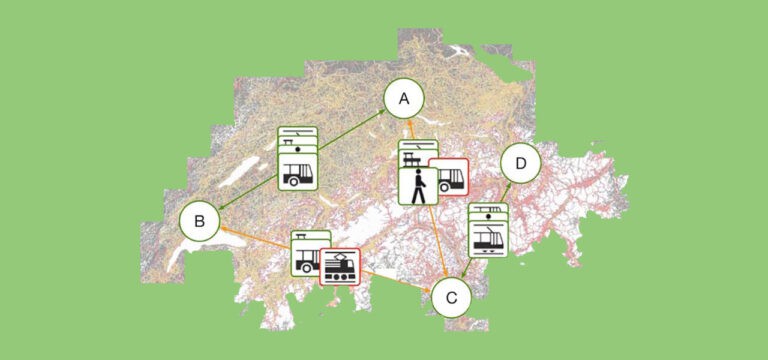Note: You can find the italian version here
Proof of reserves and zero-knowledge proof are the foundations that the world of cryptocurrency and blockchain is relying on to regain credibility.
These are not good times for the blockchain industry, particularly for cryptocurrencies and NFTs. The problem is not with the technology itself, but with the trust that has been almost entirely lost by the mainstream audience due to recent failures such as the FTX exchange, which was the third-largest in terms of volume in the world, and the countless scams related to NFTs that involved images that were not really held by their rightful owners.
As with any still-immature technology, failure in its early stages is almost inevitable. Blockchain and cryptocurrencies have been around for many years, but they can still be considered in an early stage of development towards the general public. There are always those who declare its end, as happened with the internet after the first dot-com crash between 2000 and 2001.
Looking back 20 years, we can imagine that we are facing something similar and that we are most likely just witnessing an inevitable settling down. Blockchain and everything related to it will still have a long future ahead.
Speculators, fraudsters, and those looking for easy money are always ready to prey on new opportunities. Twenty years ago, they targeted the first Web2 companies. Nowadays, they have set their sights on companies operating on the blockchain-based Web3.
As the industry matures, government regulations and increased public awareness can help prevent it from becoming overly inflated by speculators. However, cryptocurrencies and blockchain technology are associated with decentralization and the idea of being beyond the control of governments and financial institutions. While regulation could potentially undermine these principles, consumer protection from fraudulent practices is essential to restore lost trust.
To avoid government intervention (which is likely to be inevitable and is already present in some countries), the blockchain industry is attempting to self-regulate for its own survival. The remaining exchanges have adopted or are adopting a mechanism known as “proof of reserves,” which allows them to demonstrate that they possess the assets they claim to hold. This can help restore customer confidence by showing that the institution is financially stable and not engaged in fraudulent behavior such as “exit scams,” in which the company takes customers’ funds and then disappears.
Proof of reserves and zero-knoledge proof
There are several ways in which a cryptocurrency exchange or other institution can provide proof of reserves. They can use an independent auditor to certify that the institution holds the assets it claims to hold. Alternatively, they can publish a list of the institution’s assets, along with proof that the assets are in the institution’s possession. Finally, a cryptographic technique called zero-knowledge proof can be used to prove that the institution owns the assets without revealing any information about the assets themselves. While this technique is the most suitable for blockchain and the safest from manipulation, it’s also the most difficult to explain to the general public. This raises an important question: how can trust be regained if the evidence for it is not easily accessible or understandable?
The answer to this question will determine the success or failure of the self-regulatory strategy. For now, let’s explore some applications and practical examples.
Zero-knowledge proof is a cryptographic technique that allows one party (the prover) to prove to another party (the verifier) that a certain statement is true without revealing any information about the statement itself. This technique can be useful in a variety of situations, including for a cryptocurrency exchange that wants to prove to its customers that it holds a certain amount of assets without revealing the specific assets or addresses involved.
Zero-knowledge evidence has three key properties: completeness, soundness, and zero-knowledge. Completeness means that if the claim being proven is true, the verifier will be convinced of its truth. Soundness means that if the statement being proved is false, the prover will not be able to convince the verifier of its truth. Finally, zero-knowledge means that the prover does not reveal any information about the statement being proved to the verifier.
To give a concrete example, suppose Alice runs a cryptocurrency exchange and wants to demonstrate to her customers that she holds a certain amount of Bitcoin in reserve, without revealing the specific Bitcoin addresses or transactions involved. She could do this by creating a cryptographic commitment that her Bitcoins in reserve are consistent with the Bitcoin blockchain. This allows her to prove to her clients that the Bitcoins in reserve are real and not fraudulent, without revealing any information about Bitcoin addresses or specific balances.
Alice publishes this evidence allowing her customers to verify and confirm that she holds the Bitcoins she claims to hold. Customers can perform this verification at multiple levels, manually for the more experienced using cryptographic libraries, through the use of online services that automate the process making it affordable for anyone, up to verification directly within their own cryptocurrency wallet on their exchange (for those that support this service).
If you are still unclear about how the concept of zero-knowledge proof works, consider watching this video where Professor Amit Sahai explains the concept to people with varying levels of understanding, including a child, a teenager, a college student, a graduate student, and an expert. The video might seem boring, but it is actually very interesting and accessible to everyone, which is why it has over 5 million views.
All of these concepts, which may still be unfamiliar to many, form the foundation of a “healthy” blockchain that can self-regulate by excluding fraudulent operations and grow steadily, providing enormous benefits to the general public. Regulations are inevitable, but their flexibility or rigidity will also depend on what the blockchain world can accomplish in the meantime.


